York’s Penn Park was the ‘heartbeat of the city.’ It can be again.
Two teenage boys raced their bikes on the wide walkway heading northeast through York’s Penn Park.
One yelled something over his shoulder at the trailer, no doubt excited about what lay ahead. Fishing poles pointed upward, somehow affixed to their bikes or bodies. They likely were headed to more city green space, Foundry Park, to snag some fish from the Codorus Creek.
They would take Beaver Street or wind through city alleys to gain creek access at that sloping park’s boat basin.
Penn Park served as their shortcut. They didn’t pause there, too old for its splash pad or playground. There were no other kids there to hang with. Anyway, they were in too much of a hurry to get their catch before dusk.
Their presence points to Penn Park’s longtime use as a community connector, a place to gather or pass through. But there is no longer a surplus Navy jet to climb on, as their counterparts from the past had done. Or the ornate Rebecca Fountain — or was it a separate pool? — with an alligator swimming in it. Or baseball and football pickup games to join in.
But as we shall see, that walkway-turned-trail for their bikes could represent a path forward for the park.
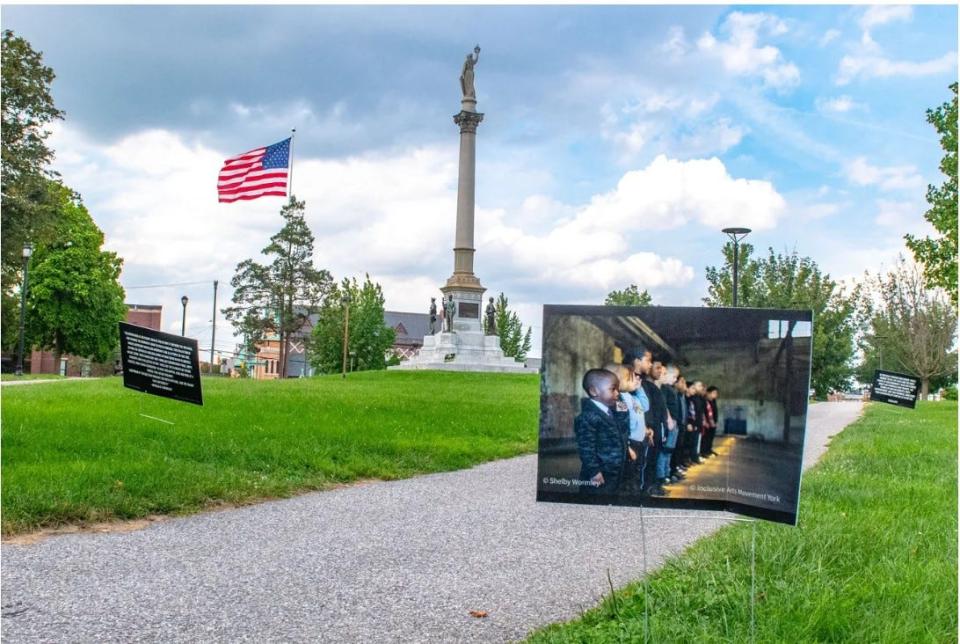
York’s first park
Penn Common became community fixture when the Penn heirs made it the town’s park in 1816.
Yet it’s far from top of mind for many city and York-area residents, leaders and investors.
The paradox is that it’s still used, as our bicycling fishermen indicate. And sometimes by thousands of people.
It was a busy place earlier this month with the What the Food Truck festival. As usual, its basketball courts hosted the Trey and Boo basketball tournament this summer. Indeed, city officials say park usage is up since the pandemic.
When you need space for a big community event — the 10,000 Acts of Kindness Festival in 2019, for example — its expanses welcome the public.
There have been unsung improvements over the years: a rain garden and nearby splash pad. A new playground. Resurfaced tennis courts.
And there’s more coming. An outdoor gym near the tennis courts is planned. And two new pavilions just went up in the past few weeks.
Still, it’s a park that is generally not viewed with respect and treated with love.
The fact is that there are no funds to transform it to what it could be or at least into a place that will regularly attract the number of users that would give it vibrancy. You get that sense of activity when you go to Memorial Park many days, particularly its skate park.
At Penn Park, funds are badly needed for more lighting, basketball court renovations and rehab work on the gardener’s shed, officially known as the Penn-Coates Memorial, near the park’s center.
Real investment has gone to York’s downtown, but the rebirth there has not substantially benefited this green space a five-minute walk away. At least not yet.
But York’s first park has good bones and is on the hunt for some muscle.
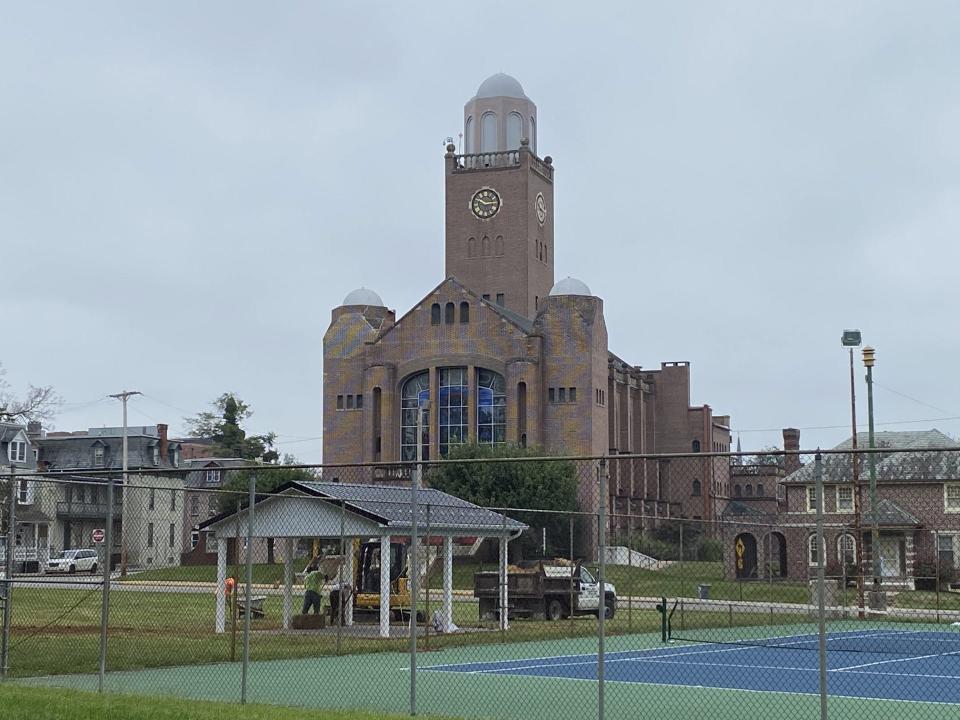
Improvements would bring respect
Charles “Chub” Neiman is the park’s biggest lookout, has been for years.
As a kid, he walked through the park on his way to York High. It was part of his boyhood.
Years later, he served on a committee at Zion United Church of Christ — that’s the towering building across Lafayette Street from the park situated on its old baseball stadium — that viewed the park improvements as part of its mission outreach.
Neiman thought York County’s 250th anniversary celebration in 1999 would cause this unsung place to sound again. The park received some love: Trees were planted, a replica arch in the mold of those around York’s square in 1899 stood there. And the park’s signature Soldiers and Sailors Monument was refurbished.
Neiman, a retired employee benefits broker, was a bit busy in that commemoration to lobby for more. He was chairman of the 250th’s spotlight event: a parade that stretched from York’s downtown to the York Expo Center, perhaps the largest such procession since the county’s last big anniversary a century before.
Working with willing York city officials and other friends of city parks, Neiman is regularly engaged in the search for funds to improve this green space. Recently, he was there to help secure a Marcellus Shale Open Space grant to build the two new pavilions.
The way he sees it, if improvements can accelerate at the park, more people will come.
Vandalism and other crimes — longtime issues there — would be reduced. In fact, the city’s care — and its workers really do care — of its 25 or so parks must be akin to playing Whac-A-Mole.
You know, you get a wonderful new playground at Williams Park. But weeks before, vandals damaged the bandstand at Farquhar Park.
“If you show interest and progress,” he said, “people might respect it.”
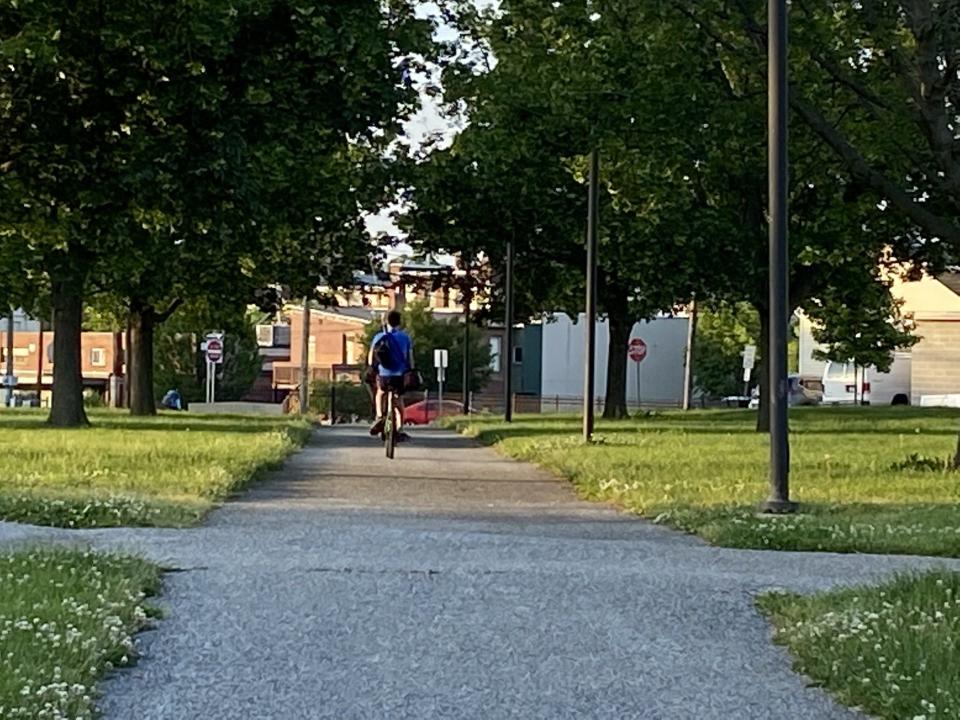
Special place in Black community
When you’re more than 200 years old, you’re going to have your good days and bad.
A bunch of good days came early, when Penn Park served as the place that men and women, freed from enslavement in the South, took early steps on free soil in this public common that at the time extended to the hills south of York.
Future figures in York’s Black community — Charles Granger and Black Hester — arrived in York that way. In fact, Granger — Squire Braxton, as he was called — took up residence in the park.
From that point to today, the park has held a special place in the Black community. It was the gathering place for protests — and celebrations — in the 1960s. In a most difficult moment, an incident of police firing over the heads of Black youths assembled there sparked racial unrest in 1968.
Another time of pain and healing came from 1862 to 1865 when a major military hospital operated there. Doctors and nurses treated about 14,000 Union soldiers, about three good-sized crowds at WellSpan Park. Two hundred died, buried today in Prospect Hill Cemetery.
After the hospital was dismantled, the unimproved park kind of sat there. Then in 1887, York borough became a city and needed a place for gathering and recreation befitting its new status.
There would be no Farquhar Park, a second city park, for about a dozen years, so Penn Common became Penn Park and received much investment. That’s when the Soldiers and Sailors Monument went up. A rockery featuring a towering Elk was constructed. The fountain went in with that reported alligator.
The Penn-Coates Memorial, the gardener’s shed or caretaker’s home, as some call it, was constructed in the 1920s, a tiny building that somehow housed a police outpost and restrooms.
This was the Penn Park that many people remember. But at some point, the park started having its bad days again. The fountain was moved to someone’s yard near Dover and is now gone from there.
The pavilion across from York High came down. Historian Jeff Kirkland has said the bandstand had special meaning for Black residents.
When you visit Penn Park, that’s where you met.
“It was a gathering spot,” he said.
Some vandal beheaded the Elk in the 1980s. The cannons that guarded the Soldiers and Sailors monument were transported to Hanover Junction and remounted there in the 2000s.
And Penn-Coates has deteriorated to the extent that it would take $173,000 to fix it, according to a recent bid.
Any visitor to Penn Park would see Penn-Coates as something that must be dealt with. You can’t bring back a park if a prominent feature in its center has a crumbling roof and floor.
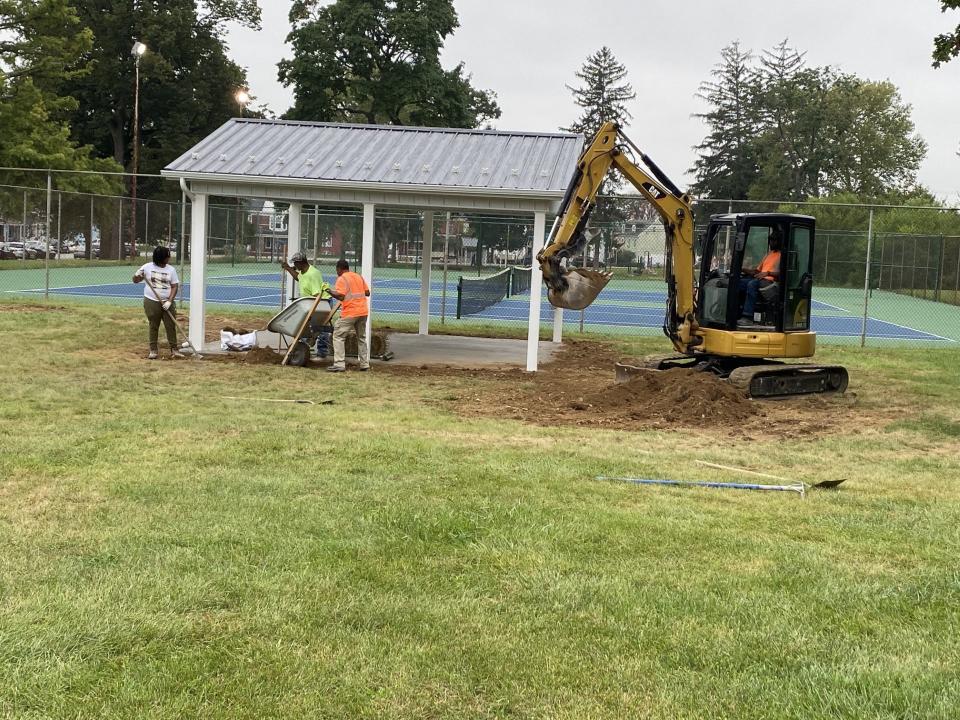
Park’s history goes deep
And yet the park has those good bones and deep history. That past is in asset, the place to start. A place to draw from.
It’s a past that Kirkland deeply respects.
“It was the lifeline, heartbeat of the city,” he said. “People knew they could come to Penn Park and be safe.”
A possible use of the restored Penn-Coates building would be a small museum documenting the park’s long story.
Really, how do you put new muscle on the old bones?
There’s some indication that community leaders today are looking for investment outside York’s downtown. Penn Market, in the west end, as just one example, is receiving a $3 million renovation.
A possible source of energy on the horizon is the idea of creating a spur of the York County Heritage Rail Trail into the park. It could run along King’s Mill Road from the trail, branching off near York College’s Knowledge Park, the former Schmidt & Ault complex.
So a trail would give a Knowledge Park to Penn Park connection. Neiman noted that it could also run in designated alleys in that King’s Mill area to Penn Park.
Such a spur would help trail users discover the park, adding to activity there. And as with the rail trail, the spur would also be used by those in the neighborhoods to walk to work and events.
In the future, the boys on the bikes could travel to Foundry Park via Penn Park and then King’s Mill Road to the rail trail rather than winding through neighborhoods.
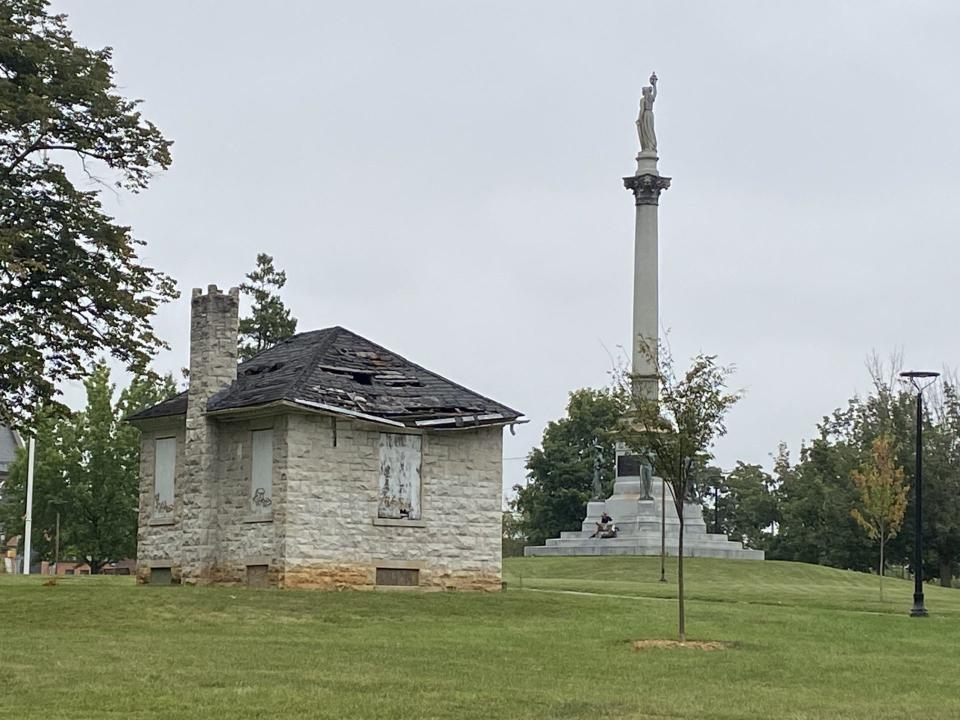
Just do what we can
Chub Neiman’s model is something to learn from.
Penn Park improvements are a primary concern of Neiman, and he’s doing what he can with his considerable organizational skills and tenacity to bring attention and respect to the park.
Neiman is doing what Kentucky-based farmer/philosopher Wendell Berry has written about: reducing big problems to the “scale of our competence.”
In other words, don’t look for big answers to major problems. Just do what we can — where we are.
And do it now.
We might just start a movement.
Sources: Penn Park master plan; YDR files; interviews, York Parks officials, Wendell Berry’s “The World Ending Fire.”
Upcoming presentation
The next episode of Jamie Noerpel’s and Dominish Marie Miller’s “Hometown History” is titled “York’s Penn Park: Longtime City Green Space Awaiting Rediscovery.” The presentation is set for 6:30 p.m. Sept. 26 before a live audience. It will also be livestreamed.
Jim McClure is a retired editor of the York Daily Record and has authored or co-authored nine books on York County history. Reach him at jimmcclure21@outlook.com.
This article originally appeared on York Daily Record: York Pa.'’s Penn Park was ‘heartbeat of the city.’ It can be again.

